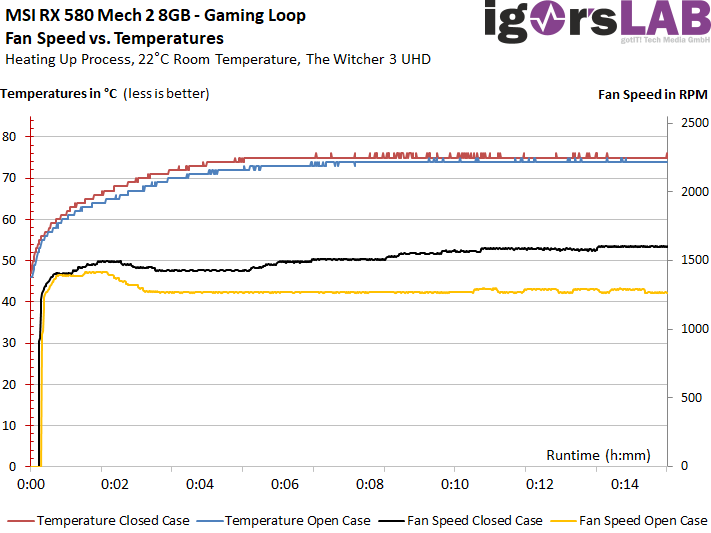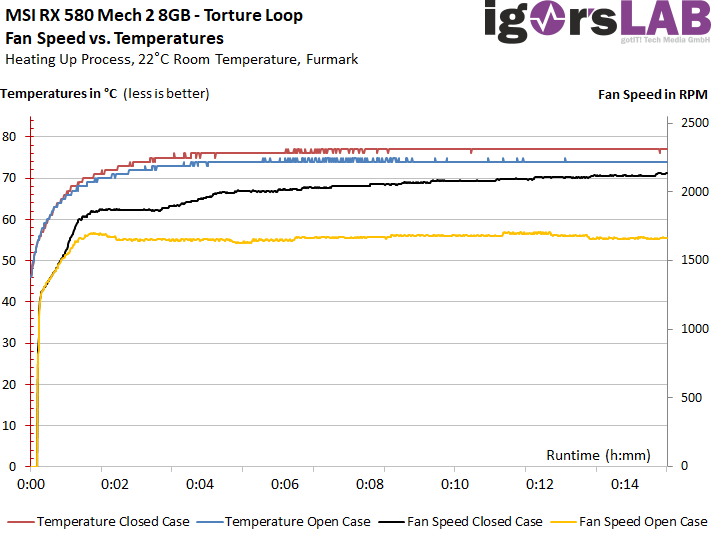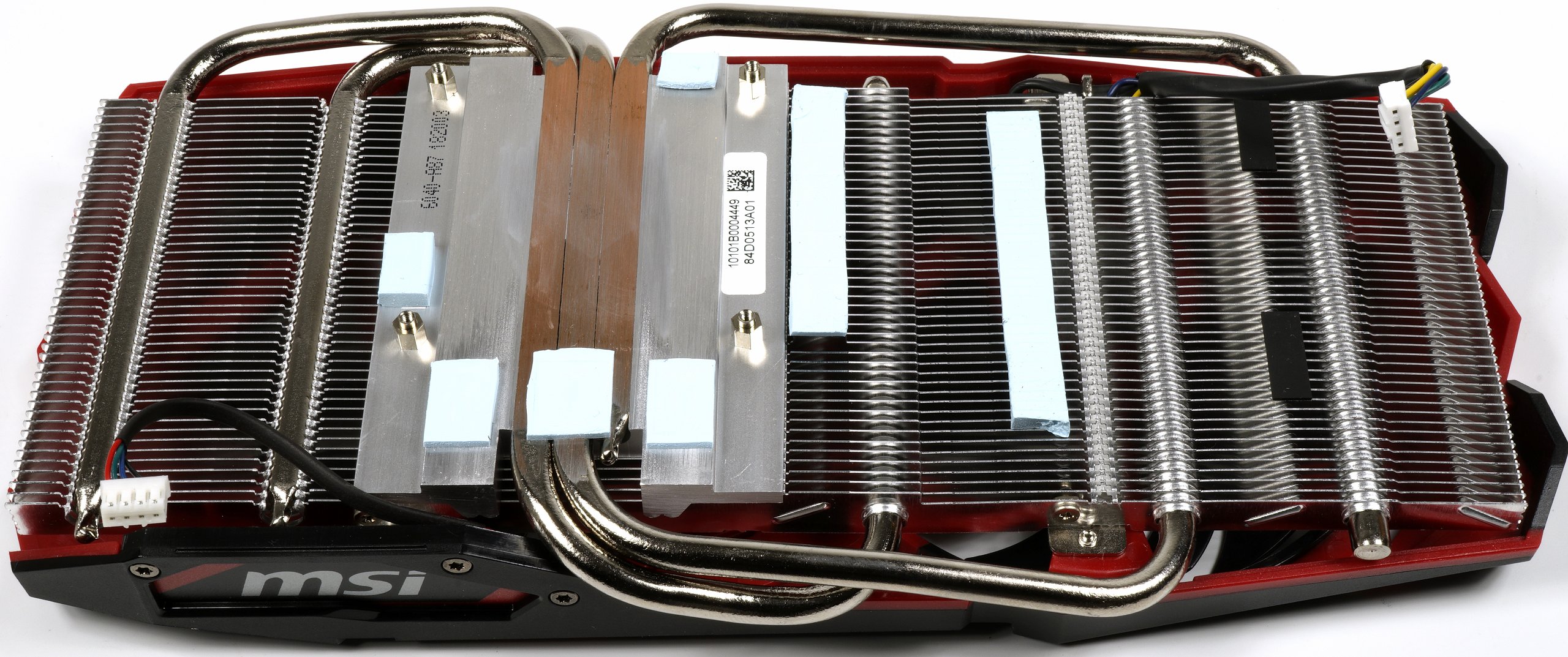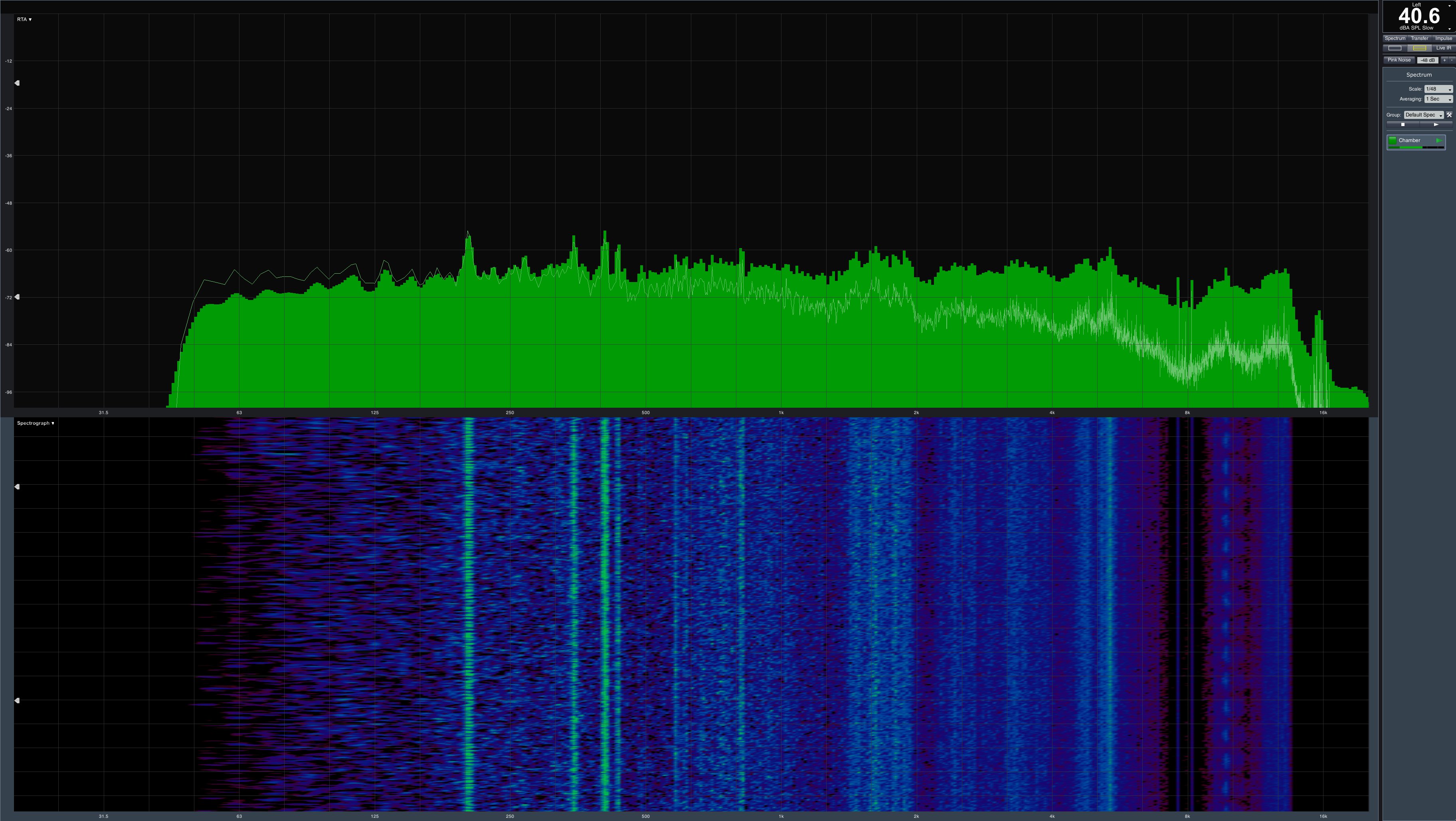Cooling
Of course, the generated waste heat is directly related to the recorded power, for which the cooling solution is responsible for optimum dissipation. I already mentioned that MSI has also said goodbye to the sandwich design with an overhead mounting and cooling frame (storage, VRM). While the GPU is cooled directly using heat sink, the memory and coils of the GPU power supply are cooled via a thick thermal pad over the main cooler, which is fastened with four screws.
MSI uses a total of three 6mm heatpipes made of nickel-plated composite material, two of which are circulating, i.e. reaching both radiator parts.
The voltage converters of the memory have to cope with the direct draught of the fans, in the GPU phases a small rib cooler has been screwed on. We have just seen how efficient this is in the thermal images. So it works, though not ultra-cool.
The backplate, on the other hand, is the stabilizing part in this case, which can also be seen by the many thick screws with which it keeps the whole PCB in shape like a corset for obese people. On the other hand, it does nothing to cool down, a pity.
| Cooling system at a glance | |
|---|---|
| Type of cooler: | Air |
| GPU Cooling | Direct Heat Touch (DHT), aluminium heat sink |
| Cooling fins: | Aluminum, horizontal alignment not inclined |
| Heatpipes | 3x 6 mm, nickel-plated copper composite |
| VRM cooling: | extra cooler for GPU-VRM |
| RAM cooling | Storage cooling via radiator floor and pad |
| Fan: | 2x 9.5 cm fan modules (10 cm opening), 14 rotor blades semi-passive regulation |
| Backplate | yes, but without cooling function |
Fan curves and noise emission ("volume")
A semi-passive mode has not been dispensed with, which is also easily feasible at 16 watts in the idle. The fan curve has chosen MSI rather conservatively. After a very short period of rather moderate cooling during the warm-up phase, the speeds later rise significantly above 50 degrees. We also clearly see how sensitive the card is to a closed housing. In order to keep the temperatures at the same level as possible, the fans in the closed housing must always rotate slightly higher when reaching the target temperature.

The whole thing doesn't look much different with the stress test. In summary, it can be said that the card with the two fans is safe, but also requires significantly higher speeds in the closed body. Whether this remains quiet, we will see in a matter of one way.

Reserves to make the fans rotate lower, by the way, the card has none, but you could get it a little louder (and cooler)
| Measurements for fans and noise emission |
|
|---|---|
| Fan speeds Open Benchtable Maximum |
1295 rpm (Peak, Gaming) |
| Fan speeds Open Benchtable Average |
1256 rpm (warmed up, gaming) |
| Fan Speeds Closed Case Maximum | 2152 rpm (Peak, Torture) |
| Fan Speeds Closed Case Average | 2108 rpm (warmed up, Torture) |
| Noise Emission (Air) Average |
40.6 dBA (warmed up, Gaming Closed Case) 42.1 dBA (warmed up, Torture Closed Case) |
| Noise Emission (Air) Idle | 0 dB(A) |
| Sound characteristic / Hearing impression |
light bearing noise light engine noise< 1 Hz moderate air/demolition noise hardly any voltage transformer noises |
If the fan speeds are set to the speeds measured in the closed structure, then with the measured 42.1 dB(A) one skips the psychologically (and acoustically) so important limit of 40 dB(A) at a distance of 50 cm quite quickly. In gaming, it's 40.6 dB(A). We have recreated this situation exactly and offer what is heard and measured in a high-resolution frequency spectrum for a better understanding:
One will certainly voluntarily pay attention to a good airflow in the housing, as this is certainly easier to implement with quiet housing fans. Or you can reduce the power limit of the card to approx. 180 watts, then it becomes almost silent in the room. The few FPS can certainly be hurt.
- 1 - Einführung, Unboxing und Daten
- 2 - Platinenlayout und Spannungsversorgung
- 3 - Gaming-Performance 1920 x 1080 Pixel (Full-HD)
- 4 - Gaming-Performance 2560 x 1440 Pixel (WQHD)
- 5 - Leistungsaufnahme im Detail
- 6 - Temperaturen, Taktraten und Wärmebildanalyse
- 7 - Kühlerdetails und Geräuschentwicklung
- 8 - Zusammenfassung und Fazit




































Kommentieren